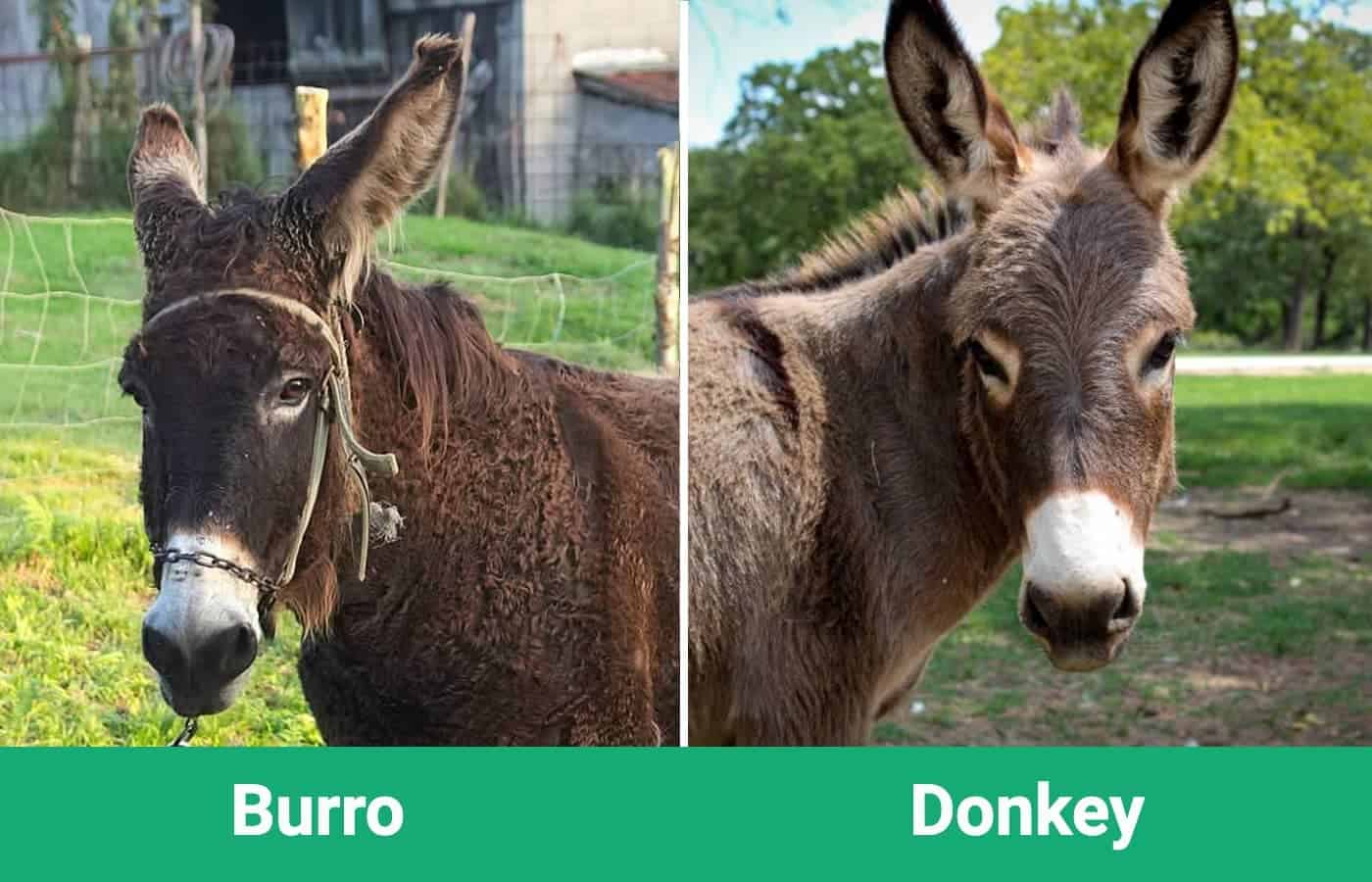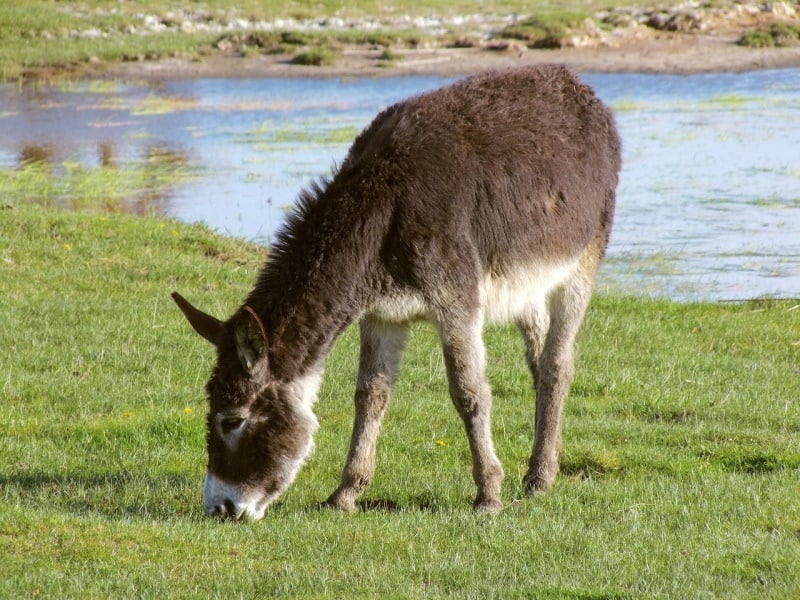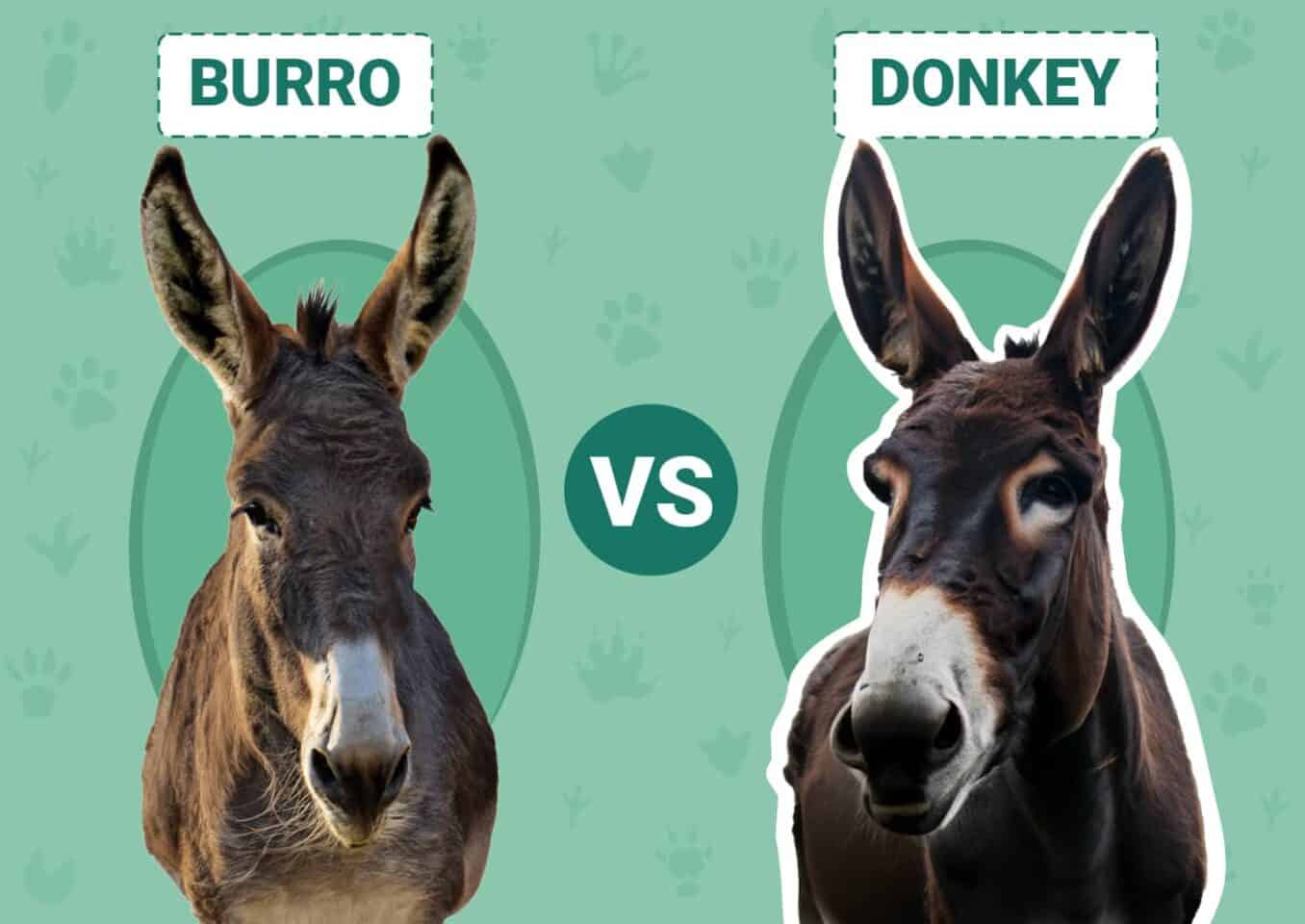Donkeys have a lot of names associated with them, including burros, mules, ass, jackass, jenny, jack, and so on. A burro could best be classified as a type of feral donkey, but it depends on the location and language you speak. “Burro” is the Spanish or Portuguese word for “donkey”, and these animals are found in Southwestern North America, South and Central America, and Spain, while donkeys are found worldwide.
There are some other differences between a burro and a donkey, which we’ll cover here.

Visual Differences

At a Glance
- Origin: Spain
- Size: 36 inches
- Lifespan: 27 – 40 years
- Domesticated?: No, unless used as a Spanish term for a donkey
- Origin: Africa
- Size: 36 – 48 inches
- Lifespan: 27 – 40 years
- Domesticated?: Yes

Burro

A burro may refer to the Spanish name for a domesticated donkey or a feral or wild donkey, depending on location, language, and context. The name “burro” actually means “stupid” in Portuguese, giving the burro an unfortunate start to life! While donkeys are usually associated with stubbornness, they are not stupid animals.
Characteristics & Appearance
Burros are typically smaller than donkeys and come in a gray-brown color with a dark stripe. Because burros live in the wild, they may have longer and shaggier hair than domesticated donkeys.
As feral animals, burros may be more aggressive and territorial than their domesticated counterparts. They evolved in a harsh environment, just like wild horses, and must be tough to survive. They also compete with other animals for food and other resources, such as bighorn sheep.
Uses
Donkeys were brought to the US in the 1800s to perform work, particularly during the Gold Rush of the 1800s. These donkeys were later abandoned, turning into feral burros that adapted to the extreme environments of the American West. Now, they’ve become an invasive species in some areas and are a focus of conservationists. Domestic donkeys are abundant, so there’s no demand to domesticate feral donkeys.
Feral burros should not be confused with the African wild ass or Asiatic wild ass, two wild donkey subspecies that are critically endangered and endangered, respectively. These donkeys have never been domesticated, whereas feral burros were once domesticated donkeys that were abandoned and learned to survive in the wild.
When “burro” is used as a Spanish word for a domesticated donkey—not a feral one—they have the same uses.

Donkey

A donkey is a domesticated equine species that includes a variety of individual breeds, though few true breeds are in existence. Though donkeys are often associated with being stubborn, these animals are widely used for farm work because they are hardy creatures. Plus, they are far less costly than a horse, hence contributing to their popularity worldwide.
Characteristics & Appearance
There are many breeds of donkeys and few purebred individuals of any breed. Donkeys may come in gray, brown, black, white, dun, roan, and other colors. They usually have a dorsal stripe, dark points, and zebra stripes on their legs.
In the US, donkeys are categorized by size more than breed, with miniature, standard, and mammoth or large varieties. Miniature donkeys are a distinctive breed, however, and come from the Mediterranean. Standard and mammoth donkeys have size classifications but may be of any donkey breed.
Donkeys can have different individual personalities, but they’re typically affectionate, laid-back, and sociable. Some donkeys can have a stubborn streak and may be territorial, which makes them good livestock guardians. Left unchecked, however, this can lead to behavioral issues.
Uses
Donkeys are hardy, intelligent, and versatile animals that are used for a variety of jobs. They were used as pack animals and brought to the US for pack and draft work, such as carrying loads and pulling carts or farm equipment. They also make good livestock guardians and pasture mates for horses and other livestock. Some people also keep donkeys for showing or as a pet, though they do best in a farm environment with a job to do.

What Are the Differences Between Burros & Donkeys?
Comparing and contrasting burros and donkeys can get confusing. If you’re referring to a feral burro, it’s simply a formerly domesticated donkey that now lives in the wild. Like wild horses, these donkeys have been wild for over a century and require both wildlife management and conservation efforts.
As a Spanish term for a burro, either in parts of the US or in South and Central America, a burro is simply a domesticated donkey. These animals are commonly found on farms and homesteads as companion animals, draught animals, livestock guardians, and for showing and recreation.

Which Breed Is Right for You?
If you’re considering a donkey, you’re either getting a donkey or the Spanish version of a domesticated donkey, not a feral burro. Trying to domesticate a feral donkey would be a close to impossible task and not recommended. The standard donkey has been bred to be domesticated and is the obvious choice for a farm or homestead.
Featured Image Credit: Top – Robert Kota, Pixnio | Bottom – Dendoktoor, Pixabay
